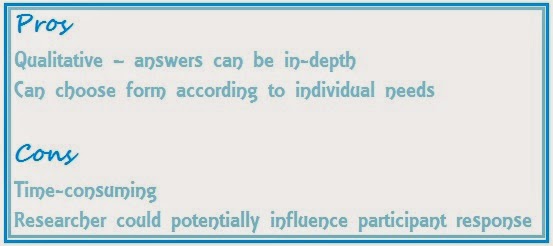Theatricalising Femininity: Part One
Burlesque, as female-oriented entertainment, is celebrated, and criticised, by opposing arguments. Allegations that it creates the ‘concept of empowerment and self-efficacy and how it relates to a woman’s body’[1] contend with arguments that dancers ‘replicate the patriarchal images of women, femininity, and female sexuality instead of challenging them’.[2]
Proceeding from Judith Butler’s assertion that gender is ‘a constructed identity, a performative accomplishment’,[3] Burlesque is an opportunity to investigate how cultural behaviours and representations of female gender alignment are interpreted, and troubled, theatrically through performance, a genre characterised by a ‘delicious parade of hyperbole’[4] and playful, sometimes subversive depictions of femininity.[5]
Image Source: theadeleidian.net
Dita Von Teese suggests that Burlesque is all about the 'joke', and that if you don't get the joke, then the joke's on you.
Dita Von Teese suggests that Burlesque is all about the 'joke', and that if you don't get the joke, then the joke's on you.
The term ‘burlesque’ derives from the Latinate root burla, meaning ‘joke, fun, mockery’, and the French suffix esque; ‘in the style of’. Therefore, I interpret the designation as “in the style of a joke”. British Burlesque performer Kirsty Allan, who performs under the stage-name Kitty Klaw, states ‘burlesque could be described as provocative performance’ for its capacity to ‘challenge the perceived norms and play with notions of acceptability’.[6]
Burlesque has its roots as satire in Greek theatre, and the playwright Aristophanes is often referred to as the ‘father of burlesque,’ [7] as his plays are considered to be amongst ‘the first to satirize people, human tragedies, and contemporary ideas and events.’[8] Aristophanes’ political comedies intended to challenge and mock officialdom and social order, and were often considered to be rather risqué. In Lysistrata, for example, women withhold sex from their husbands, as a means of convincing them not to go to war, and the final scene features comically large fake phalluses. Dita Von Teese, the ‘contemporary queen’ of Burlesque,[9] calls Lysistrata the original ‘tease’, writing that ‘these women are teasing their husbands, guiding their minds towards sex and then locking it away.’[10]
Image Source: pixels.com
Lysistrata carries resonance today, with modern interpretations appealing to contemporary audiences. Playwright Blake Morrison adapted the piece in 2007, believing the work has such impact for its ‘extravagant fantasy’, writing that ‘for women to assert themselves in a public arena’ is still challenging to social norms.[11]
Producer, Tempest Rose, argues that since Burlesque shows are largely run, and attended, by women, the form upsets notions of masculine dominance over female bodies, and promotes female-led autonomous action. She states that ‘we have the right, as women, in a female dominated art form, pioneered by women, largely run by women, to have a conversation with the women in the room.’[12] Thus, Burlesque is considered the descendant of Lysistrata, with powerful female characters controlling, and undermining masculine behaviours through female performativity.
[1] Kaitlyn Regehr, ‘The Rise of Recreational Burlesque: Bumping and Grinding Towards Empowerment’, Sexuality & Culture, 16, (2011), 134–157 (p.153), ,https://link.springer.com/content/pdf/10.1007%2Fs12119-011-9113-2.pdf> [accessed 6 January 2018].
[2] Kay Siebler, ‘What's so feminist about garters and bustiers? Neoburlesque as post-feminist sexual liberation’, Journal of Gender Studies, 24:5, (2015), 561-573, (p.566), < https://doi.org/10.1080/09589236.2013.861345> [accessed 6 Januray 2018].
[3] Judith Butler, ‘Performative Acts and Gender Constitution: An Essay in Phenomenology and Feminist Theory’, Theatre Journal, 40.4 (Dec 1988), p.520.
[4] Dita Von Teese ‘Burlesque and the Art of the Teese’, (New York: HarperCollins Publishers Inc., 2006), p.42.
[5] Throughout this essay I use ‘burlesque’ to refer to the general form of entertainment, and ‘Burlesque’ when considering the description of an act or routine involving elements of striptease.
[6] Kirsty Lucinda Allan, ‘Embracing the Taboo’, Burlesque Bible, (Bath: Anthem Publishing Ltd, 2011), p.27.
[7] Ann Corio with Joseph DiMona, ‘This Was Burlesque’, (New York: Madison Square Press, 1968), Amazon Kindle e-book, (Chapter 1, Paragraph 2, Location 39).
[8] Corio, ‘This Was Burlesque’, (Chapter 1, Paragraph 3, Location 39).
[9] Jackie Willson, ‘The Happy Stripper: Pleasures and Politics of the New Burlesque’, (London and New York: I.B.Tauris & Co Ltd, 2008), Amazon Kindle e-book, (Chapter 1, Paragraph 2, Location 607).
[10] Von Teese, ‘Burlesque and the Art of the Teese’, p.4. [emphasis in original]
[11] Blake Morrison, ‘A 2,500-year-old sex ban’, Guardian, 10 September 2007, <https://www.theguardian.com/politics/2007/sep/10/theatre.classics> [accessed 29 Dececmber 2017].
[12] Tempest Rose, Interviewed by Essay Author, (London: December 27, 2017).





Comments
Post a Comment